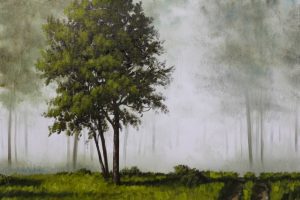
Being the most popular medium due to its forgiving nature, many of the artists wish to learn to oil paint as a means of self-expression and creativity and with this intention in mind, enroll for classes wherein they can expect to learn the different oil painting techniques from the maestros of the field. In this respect, the student might as well bear in mind the fact that like all new activities oil painting also needs to be learned from scratch and that there is no short cut which would enable one to become an accomplished oil painter overnight. However, joining oil painting lessons would undoubtedly speed up the process as one would get an opportunity to learn to oil paint by incorporating the various oil painting tips imparted by the guru.
Initially, while oil painting how to paint landscapes, seascapes, animals, and flowers forms the content of the oil painting lessons as instructions pertaining to the various oil painting techniques employed for painting these subjects are imparted to the student artist. Landscape, being the easiest, is not only the most common but also the first to be handled by beginners by utilizing some of the traditional oil painting techniques. While painting a landscape with oils, the student is instructed to start from the sky and gradually move downwards. This is not only in keeping with the light to dark rule but also entails the application of the wet-in-wet technique. One way of imparting depth to landscape oil is to paint the farther objects in light colors and the closer details in dark colors.
Attempting a seascape is comparatively a more challenging task but certainly not impossible to achieve for a dedicated student who believes in a lot of practice. Seascapes are best painted by utilizing the wet-on-wet technique which entails the application of wet paint on top of another wet paint so as to create soft edges and proper blending of different colors. Seascape is usually replete with clouds, foam, waves and beaches and sometimes a lighthouse as well all of which can be depicted by maintaining a certain angle of the brush stroke. A beginner needs to remember that while painting a wave, the inside of the wave requires an under curve brush stroke whereas the top of the wave requires an overhand.
Painting animals is a more complex task as one needs to keep in mind details like long fur, short fur, eyes and the overall proportion. In this regard, one of the noteworthy recommendations pertaining to making an oil painting of animal is to copy from a picture and try to produce the closest possible replica in terms of the mood, theme, and expression of the particular animal or a bird. This would not only provide the artist with practice in various techniques but would also make him versatile. Likewise, for painting flowers, one would need a vast array of colors and a combination of several techniques in order to be able to acquire the desired result.
Having mastered most of the traditional techniques through these basic subjects, one can then graduate on to more complex subjects and even oil painting as an outlet for one’s dreams and fantasies.
